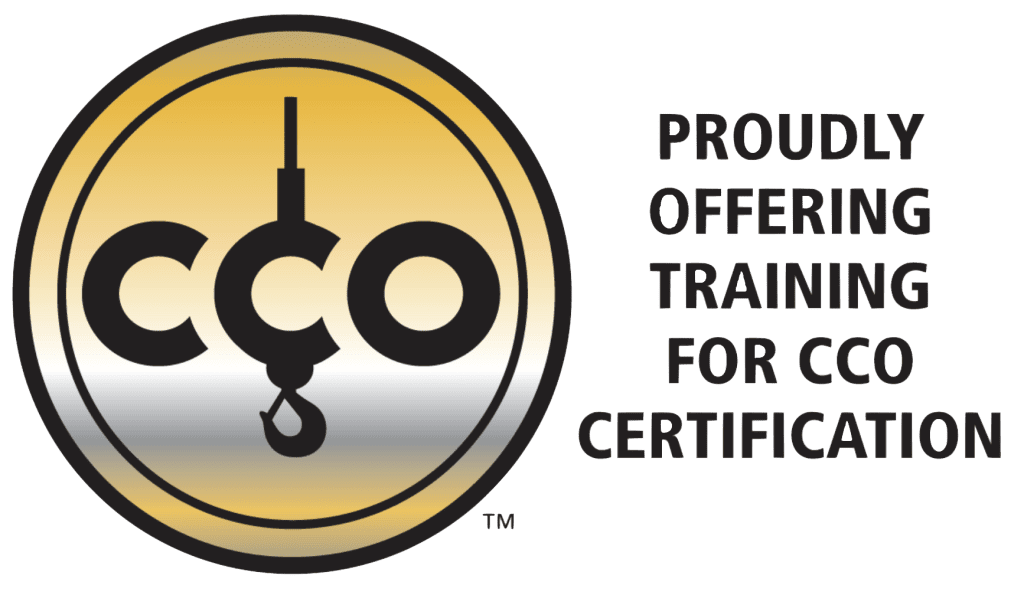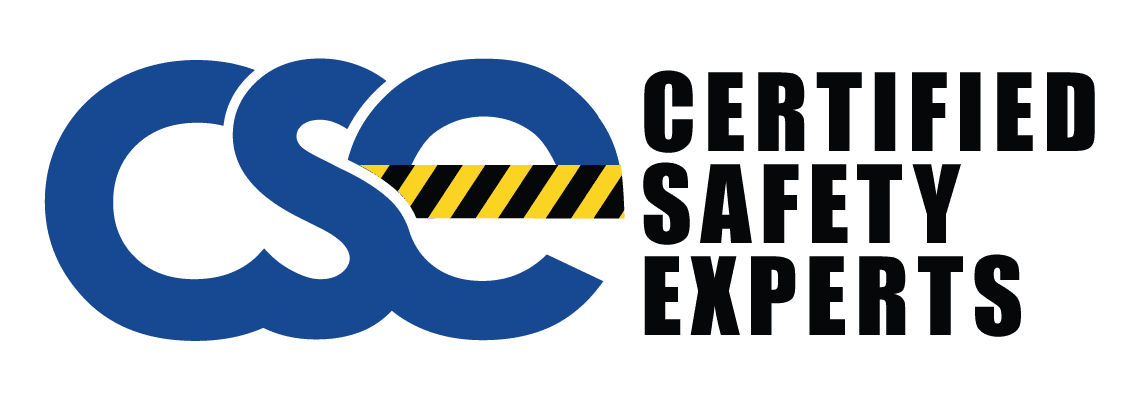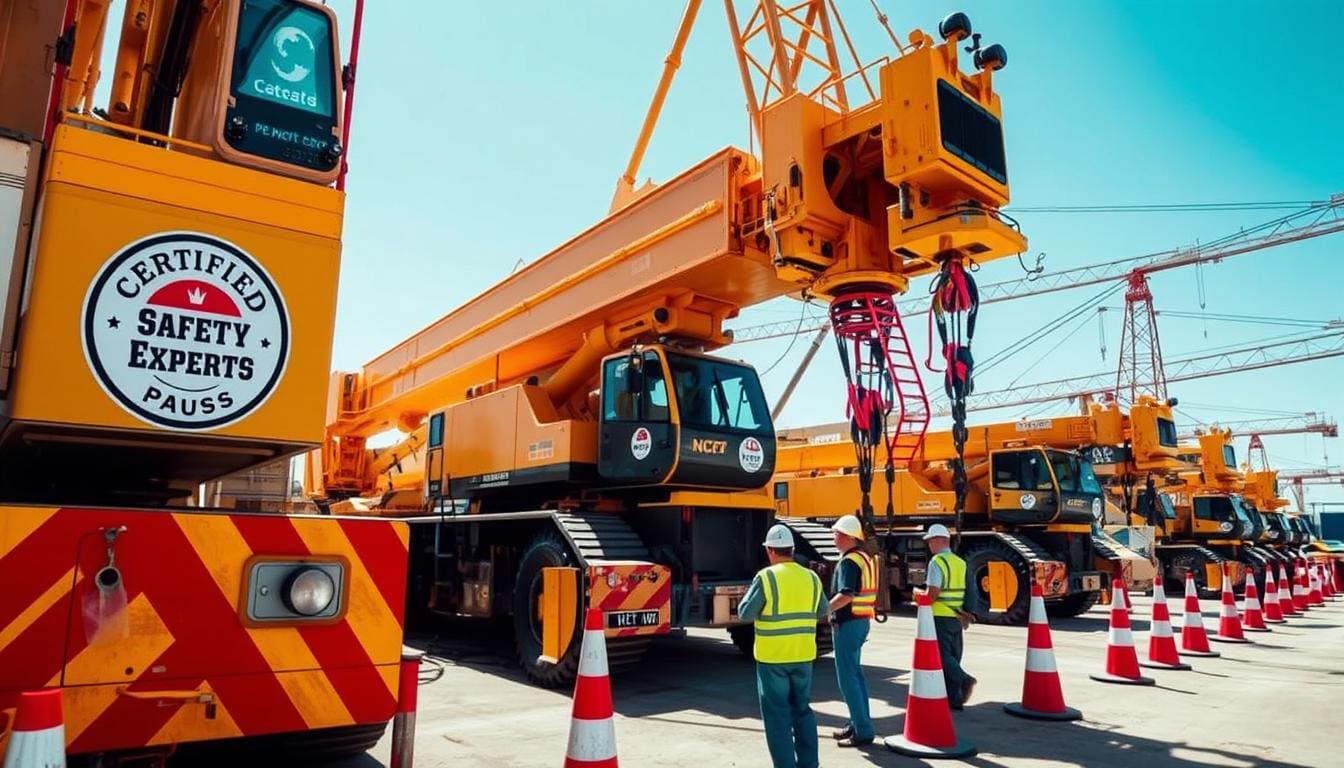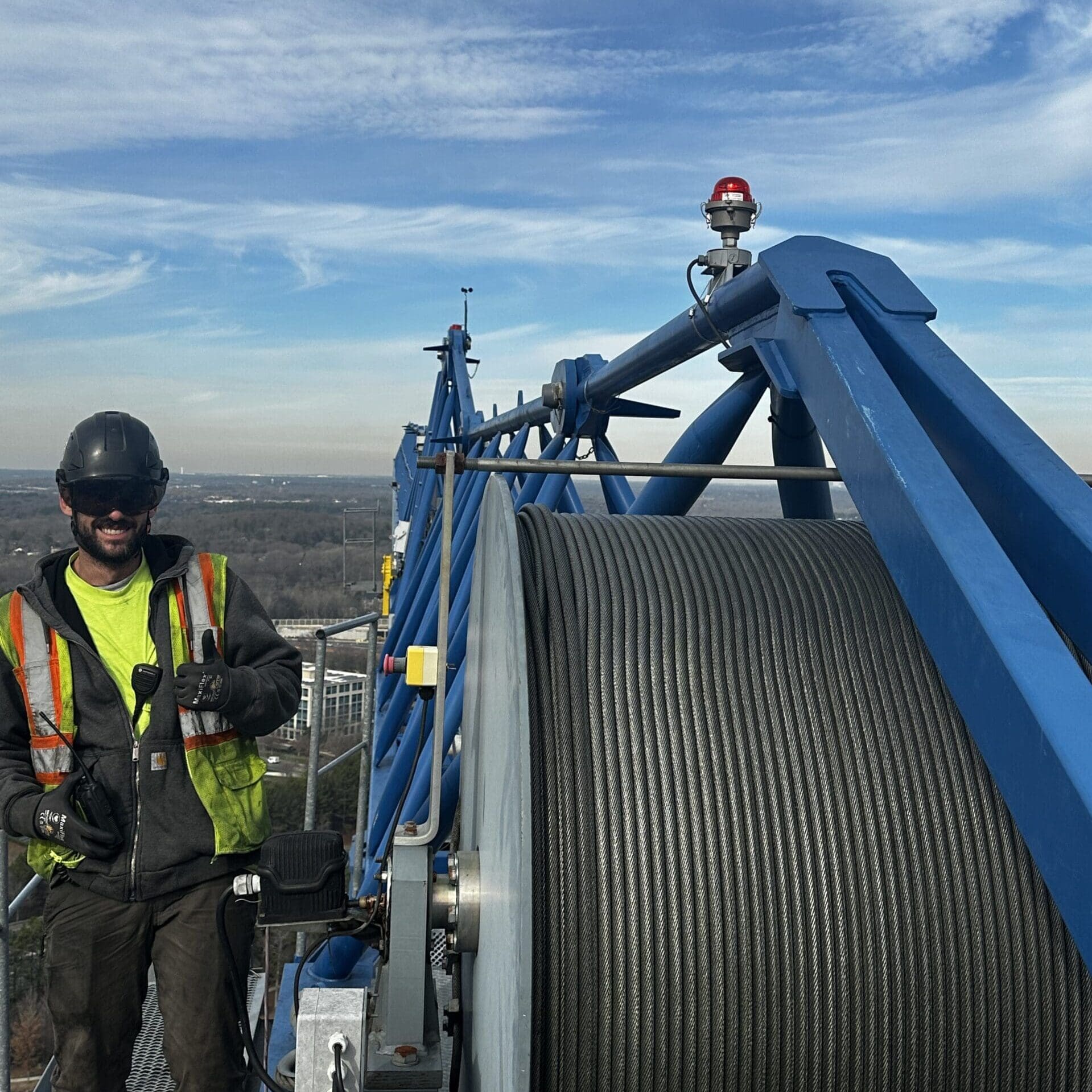Did you know a small mistake in a crane check could cause big problems? Crane inspection rules are more than just paperwork. They are key to keeping things safe and running smoothly in industries.
Following crane inspection compliance and overhead crane inspection guidelines lowers risks like equipment breakdowns and mistakes by people. This can save lives and avoid big financial losses. The Occupational Safety and Health Administration (OSHA) and the American National Standards Institute/American Society of Mechanical Engineers (ANSI/ASME) set rules that are key for safe crane use.
Key Takeaways
- Crane inspection rules are key to stopping accidents and keeping things running well.
- Following these rules cuts down on risks like equipment failures and human mistakes.
- OSHA and ANSI/ASME have standards for checking overhead cranes.
- These standards help prevent serious injuries, deaths, and big financial losses.
- Regular upkeep and detailed checks are vital for crane safety.
Understanding Crane Inspection Regulations
Following crane inspection rules is key for safety and efficiency in heavy machinery use. Regular checks spot hazards, check if equipment is safe, and make operations more reliable.
Regular checks are vital for watching over wear and tear. They look at crane parts and make sure they meet crane safety guidelines. The main goal is to keep workers safe and follow the law, avoiding fines.
Importance of Crane Inspections
Regular crane checks are very important. They spot mechanical problems early, keeping workers safe and close by. They also keep the crane strong, saving money on big repairs or new parts.
Regulatory Bodies Involved
Groups like OSHA and ANSI/ASME make sure crane safety guidelines and crane inspection regulations are followed. OSHA sets federal safety rules, including for cranes, under Title 29 of the Code of Federal Regulations. ANSI/ASME offers standards for crane design, inspection, testing, and upkeep. These are often used by OSHA and followed in many industries.
OSHA Crane Inspection Requirements
Understanding the OSHA crane inspection requirements is key to keeping cranes safe and working right. These rules are found in 29 CFR 1910.179 and 29 CFR 1926.1412. They cover when inspections must happen and how to keep records.
Mandatory Inspection Schedules
The OSHA crane inspection requirements set clear schedules for checks:
- Daily Inspections: Before using, check control mechanisms, safety devices, and aids every day.
- Frequent Inspections: Often check hooks, ropes, and other parts for wear, damage, and big flaws.
- Annual Inspections: Every year, inspect the whole crane to make sure nothing is missed.
Documentation and Record Keeping
Keeping good records is crucial for OSHA crane inspection requirements. Employers must keep detailed records that include:
- Inspector’s Qualifications: Proof that the inspector knows what they’re doing.
- Inspection Dates: The exact dates of inspections.
- Findings: The results of inspections, pointing out any problems.
- Corrective Actions: What steps were taken to fix issues.
These records prove you’re following the rules. They also track maintenance history and spot ongoing issues that might mean bigger problems.
ANSI/ASME Crane Inspection Standards
ANSI crane inspection standards are key to keeping cranes safe and efficient. Following these standards makes sure cranes work safely and well. We’ll look at some important ANSI/ASME standards and how to follow them.
Frequently Cited Standards
Many ANSI/ASME standards are often used in the crane world. These include:
- ASME B30.5 – This standard is all about mobile cranes. It gives detailed rules for how to use, check, and keep them up.
- ASME B30.2 – This standard is for overhead and gantry cranes. It sets out the rules for safe and smart use.
These standards talk about crane operator and signal person qualifications, maintenance needs, and safety rules. Knowing and following these rules is key for staying in line and keeping things safe.
Ensuring Standards Compliance
To follow ANSI crane inspection standards, you need to really get what the rules say and make them part of your daily work. Here are some steps to help you:
- Regular Training Programs – Keeping crane operators, signal persons, and maintenance staff up to speed with the latest standards is a must.
- Internal Audits – Doing regular checks within your own team helps spot any issues and fix them fast.
- Certified Professional Inspections – Having experts do inspections makes sure you’re meeting ANSI/ASME standards and shows your team is on the right track.
By doing these things, companies can stick to ANSI crane inspection standards. This means they meet the law and keep their operations as safe as possible.
Creating an Effective Crane Inspection Checklist
An effective crane inspection checklist is key. It lists what to check during an inspection. It helps inspectors follow crane maintenance regulations and keeps the workplace safe.
Key Components of an Inspection Checklist
The main parts of a crane inspection checklist are:
- Structural elements
- Mechanical systems
- Electrical components
- Load-bearing devices
- Control mechanisms
These parts are vital for the crane’s safety and efficiency. They make sure the crane works well under the rules.
Customizing Checklists for Specific Cranes
It’s important to make checklists for different cranes because they vary a lot. Each crane has its own features and risks. A checklist made just for a crane helps with work efficiency and makes the crane last longer.
Best Practices for Crane Maintenance Regulations
Following effective crane maintenance rules means doing a few key things. First, make sure your team knows how to inspect and maintain cranes. They should learn why crane safety rules are important and know what OSHA says about inspections.
Creating a safety-first culture is also vital. This means everyone sees the value in following the rules and talks openly about safety concerns. It’s important to have a good way to report and fix any safety issues quickly.
It’s also crucial to keep up with new rules and best practices. Checking and updating how you maintain cranes helps keep them safe and working right. These steps not only help you follow the rules but also make your workplace safer and more efficient.
- Thorough training for inspection and maintenance staff
- Fostering a safety culture that stresses regulation adherence
- Implementing a robust system for issue reporting and resolution
- Staying informed about regulatory updates and industry best practices
- Regularly reviewing and refining maintenance routines
Conclusion
Keeping up with crane inspection rules is key for safety and efficiency. Following OSHA and ANSI/ASME guidelines helps keep the workplace safe. It also makes sure cranes work well and last longer.
Regular checks are very important. By following these rules, companies can lower the chance of accidents and equipment problems. Using detailed inspection lists for different cranes helps make sure everything is checked properly.
If you need help with crane inspections, there are experts available. Call (919) 326-3742 to set up an inspection or get advice. Following crane inspection rules keeps people and equipment safe. It also makes operations smoother and more reliable.
